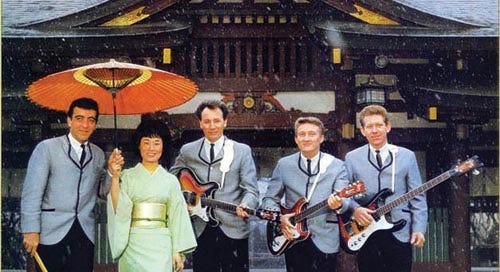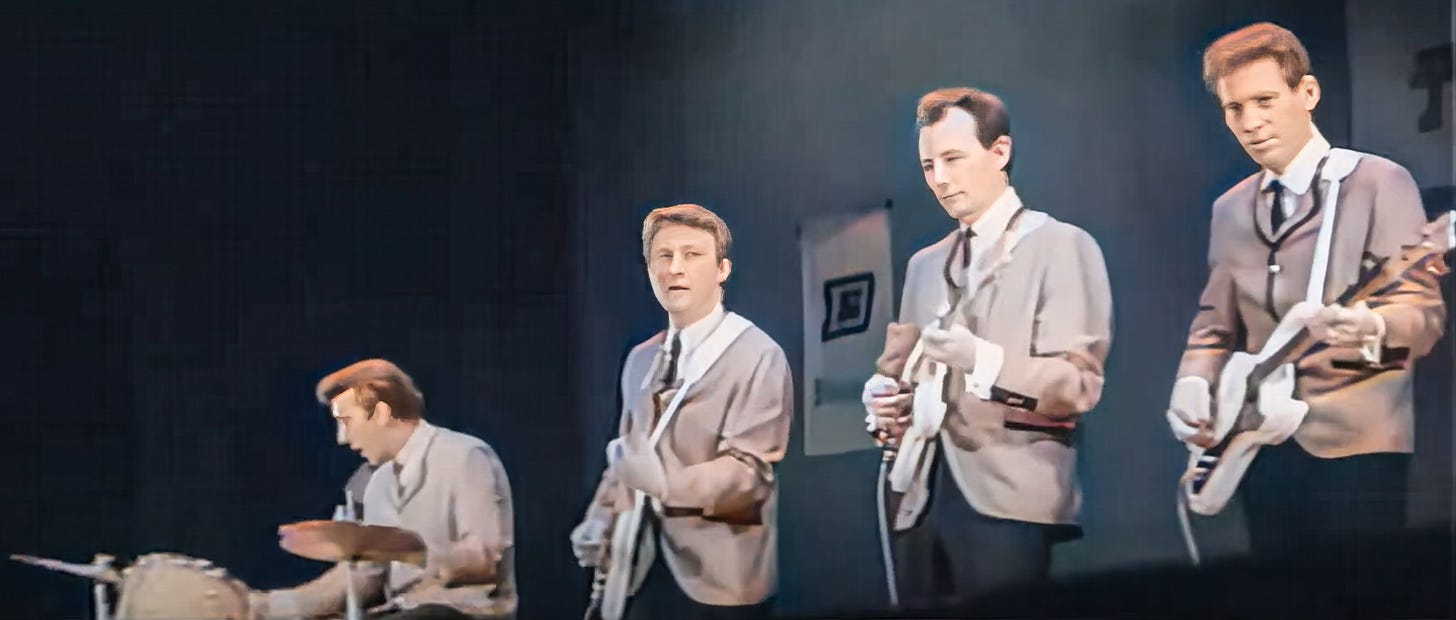Where no band has gone before: The Ventures & Fender Japan
The original “big in Japan” band, their Fender Signature Model instruments and enduring legacy
If The Ventures and signature model guitars go together like peanut butter and jelly, so does our Substack and YouTube channel. Scroll down to the bottom for the latest installment of our MIJ Supplemental series, and for those readers that prefer to digest their instrumental surf rock in print, we give you a tale of transoceanic twang and savvy branding.
When the Ventures co-founders Don Wilson and Bob Bogle first toured Japan in 1962 (their agent didn’t have enough money for the whole group), rock ‘n’ roll was essentially entirely unknown to the Japanese people. Japanese booking agents initially paired the surf pioneers with a stand-up bassist and drummer, entirely unfamiliar with the idea of an electric combo. The Ventures spent the rest of that relatively uneventful tour opening for teen idol Bobby Vee and rockabilly pioneer Jo Ann Campbell, completely unaware just how impactful their presence in the country would be.
Things changed very quickly. The Ventures and the new music they brought to the island nation were a near-instant hit with the young people of Japan, and promoters began pushing the Ventures as the face of the new sound sweeping the nation. The period that followed, known in Japan as the “eleki boom,” saw thousands of Japanese youths purchasing electric (hence “eleki”) guitars and forming groups to emulate their new musical heroes. In 1964, when the Ventures returned to Japan (this time as a full group), they were treated to a Beatlemania-style welcome, mobbed by thousands of fans waiting for them at the airport. In fact, they were significantly bigger than the Beatles within Japan, outselling the Brits roughly 2-to-1. Don Wilson believed that the instrumental nature of their music was a significant factor in their success, with no language barrier to ostracize potential fans.
Regardless of the factors that put the Ventures on top, their success in Japan is staggering. They’re the best-selling instrumental group in rock history, with over 105 million LPs and CDs sold worldwide; of that number, 40 million alone were sold in Japan. A significant number on its own, that figure is even more impressive when one considers that Japan was a country of roughly 100 million people in the Ventures’ heyday. That popularity has endured for decades: today, it’s estimated that there are around 600 individual Ventures cover bands in Japan, and countless Japanese groups list the Ventures among their foremost influences. The band is an undeniable part of the rise of the electric guitar in Japan, and in 2010 they even received the Order of the Rising Sun, directly from the Emperor of Japan himself, for the development and enrichment of music culture in Japan.
The surf rock craze and the eleki boom are both intrinsically linked to a very specific subset of guitars, and the Ventures bear a lot of responsibility for that association. When the group started out in 1958, their dual-guitar sound featured the unmistakable sparkle of Fender, pairing a Stratocaster and a Jazzmaster.
However, in 1963, the band signed a contract with the Semi Moseley and his fledgling Mosrite company. The Ventures funded production at Mosrite’s Bakersfield, CA factory and began to exclusively play Mosrites instruments; in return, Moseley began producing the “Ventures Model,” later known as the Mark I, with the band’s logo prominently placed on the headstock (above even the Mosrite logo). When most folks think of Mosrite guitars today, they think of the Ventures Model, despite the fact that the original run of Ventures Mosrites only lasted for about five years, with the contract terminated by ‘68.
In 1996, Fender Japan, looking to celebrate the company’s 50th anniversary, decided to collaborate with the Ventures to release a one-year-only series of signature models. Despite the widespread association of Mosrite instruments with the Ventures, they were still very much linked with Fender’s early growth and had played a massive role in the initial popularization of their instruments in Japan. Additionally, in the decades following the dissolution of the Ventures’ Mosrite contract, they had frequently favored Fender instruments both on-stage and in the studio.
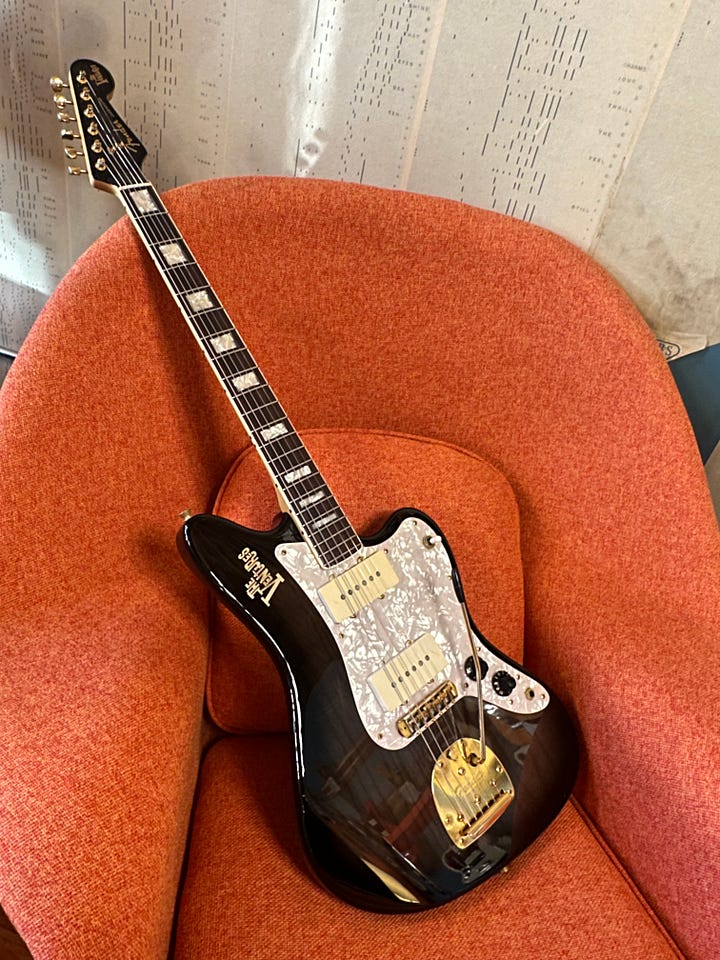

The original run of 1996 Ventures signatures are among the least common Fender Japan signatures, and less than 200 of each instrument were exported for sale in the USA (an honor bestowed upon virtually no other “Made in Japan” guitars). There were three models: a Jazz Bass for Bob Bogle, a Jazzmaster for Don Wilson, and a Stratocaster for guitarist Gerry McGee. All three models had the same transparent Midnight Black Transparent finish on top of lightweight ash bodies, with gold hardware and Ventures logos both on the headstock (and bass-side body horn for an unspecified percentage of the instruments). They were premium models, among the most expensive offered by Fender Japan at the time, selling for ¥165,000, when many standard line Fender Japan offerings cost 1/3rd of that amount.
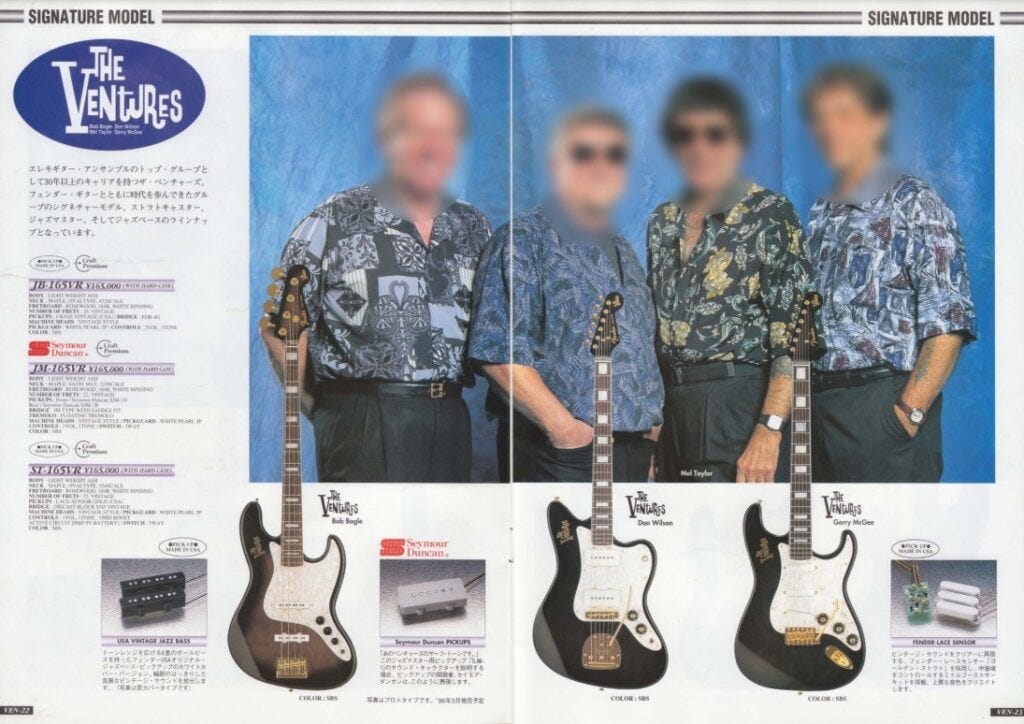
Each of the three instruments had unique, player-specific features: Bob Bogle’s Jazz Bass was loaded with a pair of USA-made pickups, with a large pearloid pickguard that extended across the area typically occupied by the control plate. Gerry McGee’s Strat, inspired in part by the Eric Clapton Signature model, was outfitted with a trio of Lace Sensor pickups and an MDX mid-boost circuit at the second Tone knob. Don Wilson’s Jazzmaster featured a pair of Seymour Duncan pickups, streamlined controls (no Rhythm Circuit), and a satin neck finish.
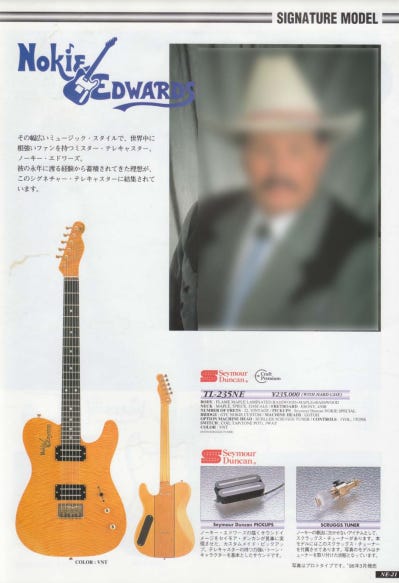
There was also a fourth signature for former guitarist Nokie Edwards, who was not actively performing with the group in the ‘90s (he would return in the early 2000s and continue to play off and on with the band until his passing in 2018). Known in Japan as the “King of Guitars,” Edwards was independently successful and actively touring in Japan throughout the ‘90s, making it natural decision to give him his own signature model. The Nokie Edwards TL-235NE Telecaster was easily the most unique of the Ventures-centric models, forgoing the uniform look of the Ventures' signatures for a never-before-seen combination of features including a heavily figured, bookmatched flame maple top, a set of Schaller Scruggs banjo tuners, a custom bridge design, and a pair of splittable custom-made Seymour Duncan “Nokie Special” humbuckers with blade pole pieces.
The overall construction was very unique beyond the flame maple top: the body featured a three-piece basswood/maple/basswood design, with a five-piece maple neck and an ebony fretboard. Additionally, on the bass-side horn where the Ventures logo was placed on the Japan-exclusive Ventures’ signatures, Edwards’ model featured his own name/logo, with his signature on the headstock.
Fender Japan had only planned on producing the quartet of instruments for one year, but the limited run models ended up being popular enough to warrant a continuation of production (running up until ‘99). The extended run models were produced exclusively for the Japanese domestic market, however, further contributing to the overall rarity of these unique instruments outside of Japan.
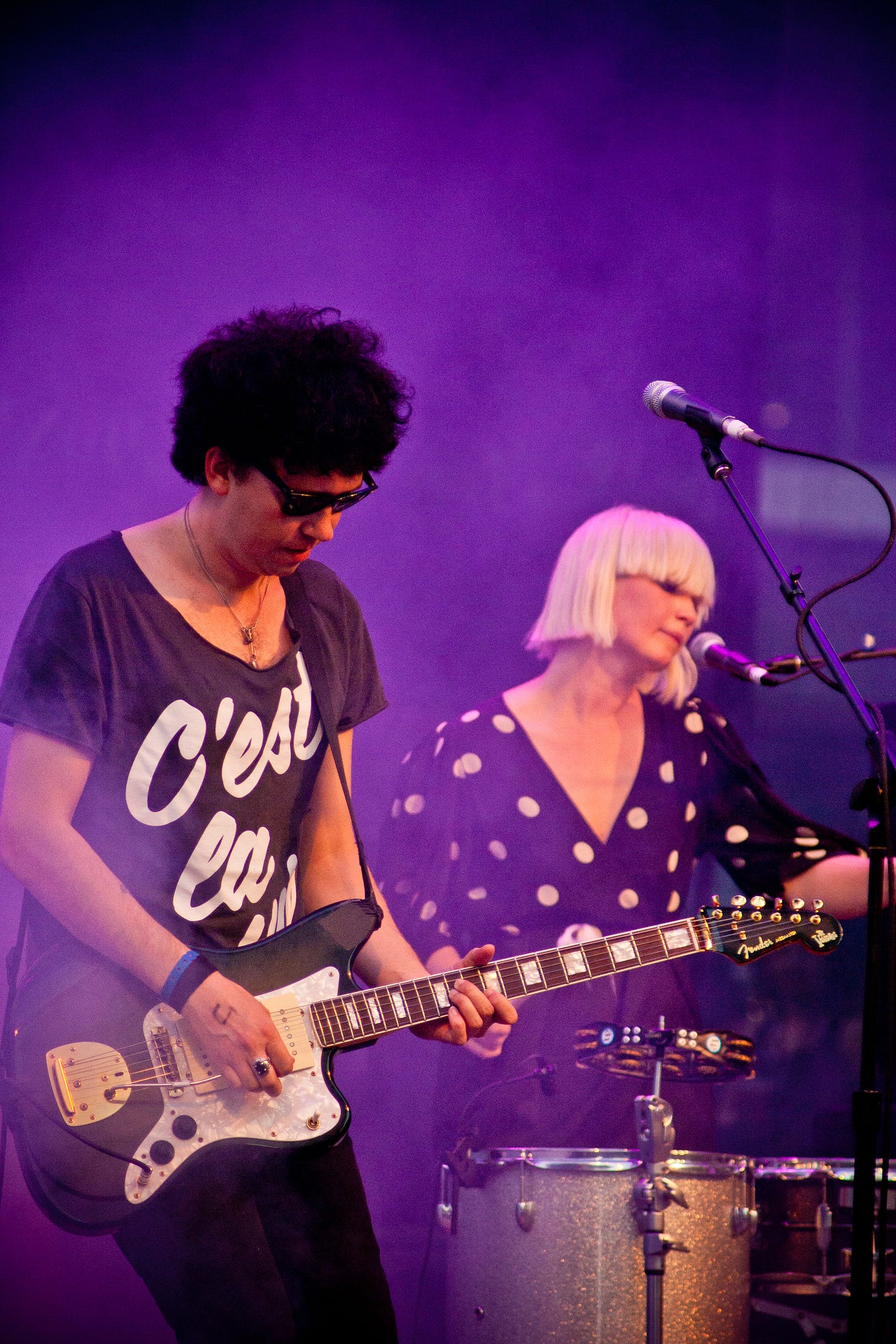
While plenty of other artists (both Japanese and western) have received Fender Japan signature models over the years, it’s very telling that the company specifically chose the Ventures to partner with for such a landmark milestone.


